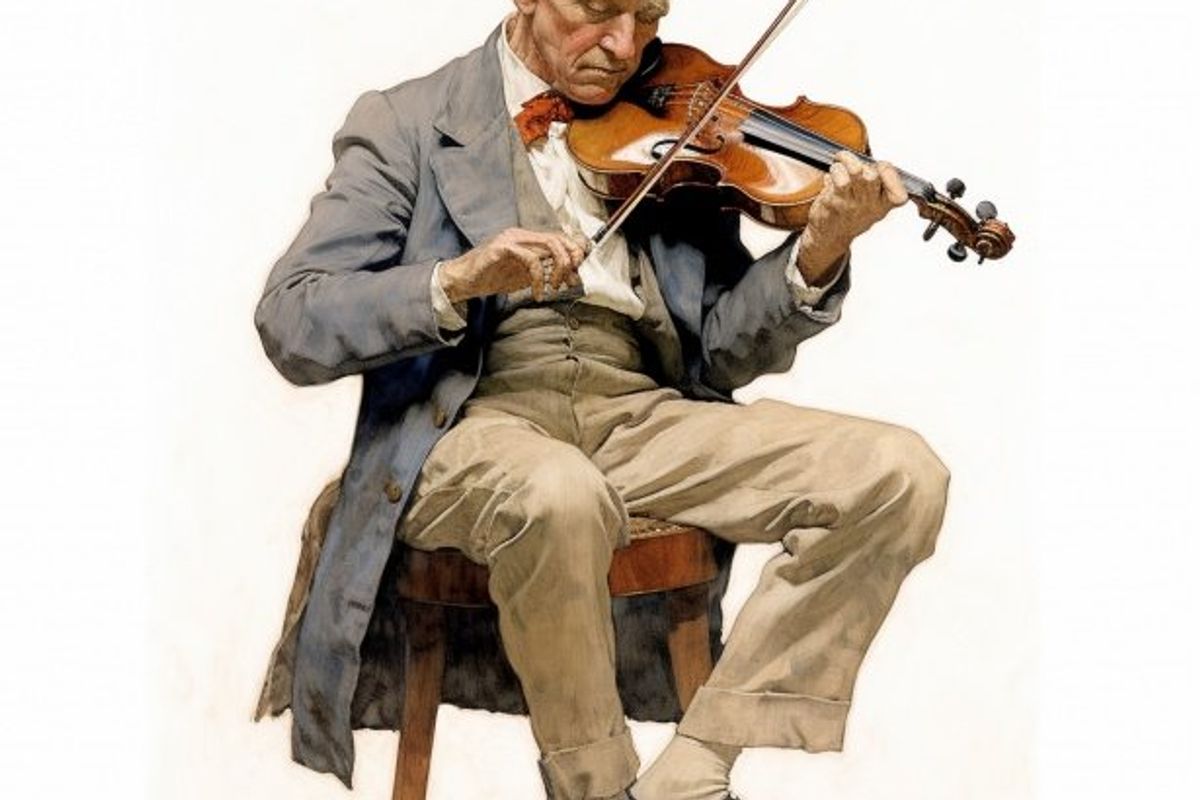A mysterious note found inside a violin constructed in Dachau has been found 80 years later
"Remember me, remember us."

Art of an Older Man Playing Violin.
In the face of the darkest of tragedies, there can be kernels of hope and moments of unimaginable light. For many oppressed people throughout time, music is one of those kernels. That was certainly the case for some Jewish people faced with unthinkable horrors during the Holocaust—a time when the morality of humanity itself was challenged to its core.
The Violins of Hope Project was founded by Avshalom Weinstein and his son Amnon. over the life of the project, they have amassed a collection of stringed instruments with connections to the Holocaust which they then restore for musicians around the world to play. In a video posted to Today's YouTube, NBC's Jesse Kirsh reports, "It harnesses powerful music with a special collection of violins and other string instruments originally owned by victims of the Holocaust and honors their legacy by keeping their music alive."
- YouTubewww.youtube.com
On the Philharmonic Society's website, they share, "All instruments have a common denominator: they are symbols of hope and a way to say, 'Remember me, remember us. Life is good, celebrate it for those who perished, for those who survived. For all people.'"
Sadly, Amnon passed in 2024, but "his extraordinary legacy lives on through this collection, ensuring that the memories and music of those who suffered are never forgotten. Each instrument tells a story, and serves as a symbol of hope and remembrance."
Now, something extraordinary has been found inside of a violin, reported to have been built inside the Dachau concentration camp. According to an article by Associated Press reporter Justin Spike, "A Jewish prisoner secretly penned a short note and hid it inside a violin he had crafted under harrowing circumstances—a message to the future that would remain undiscovered for more than 80 years."
The note read: "Trial instrument, made under difficult conditions with no tools or materials. Dachau, Anno 1941, Franciszek Kempa."
The article relays that the wooden violin was built by Franciszek "Franz" Kempa in 1941 while a prisoner in the Nazi camp in Germany. "It wasn’t until art dealers in Hungary sent the instrument out for repairs—after having stored it for years among a set of purchased furniture—that its history came to light." He later adds, "It is the only known instrument actually built inside the camp."
Franz, an expert violin-maker, survived Dachau and, "according to documents provided to the Hungarian art dealers by the museum at the Dachau memorial site…returned to his native Poland to continue making instruments before dying in 1953."
His instrument-making expertise might have been the very thing that spared him from death. One of the art dealers, Tamás Tálosi, beautifully states, "We named it the ‘violin of hope’ because if someone ends up in a difficult situation, having a task or a challenge helps them get through a lot of things."
This miraculous violin surviving maddening conditions can perhaps be seen as a symbol not just of hope, but of perseverance. Alongside other instruments, it can sing through its strings what is impossible to speak in words. And it can hopefully inspire a better world where our memories of history prevent us from repeating it.

